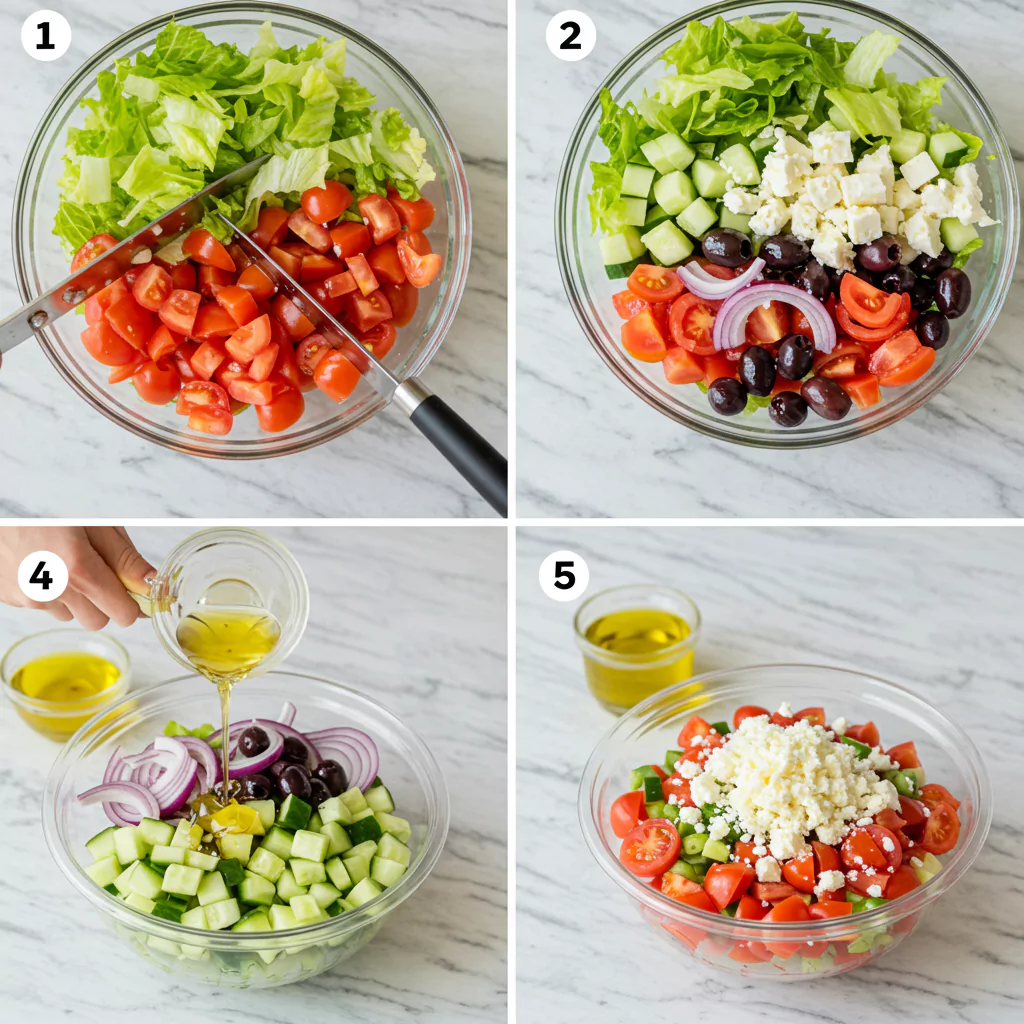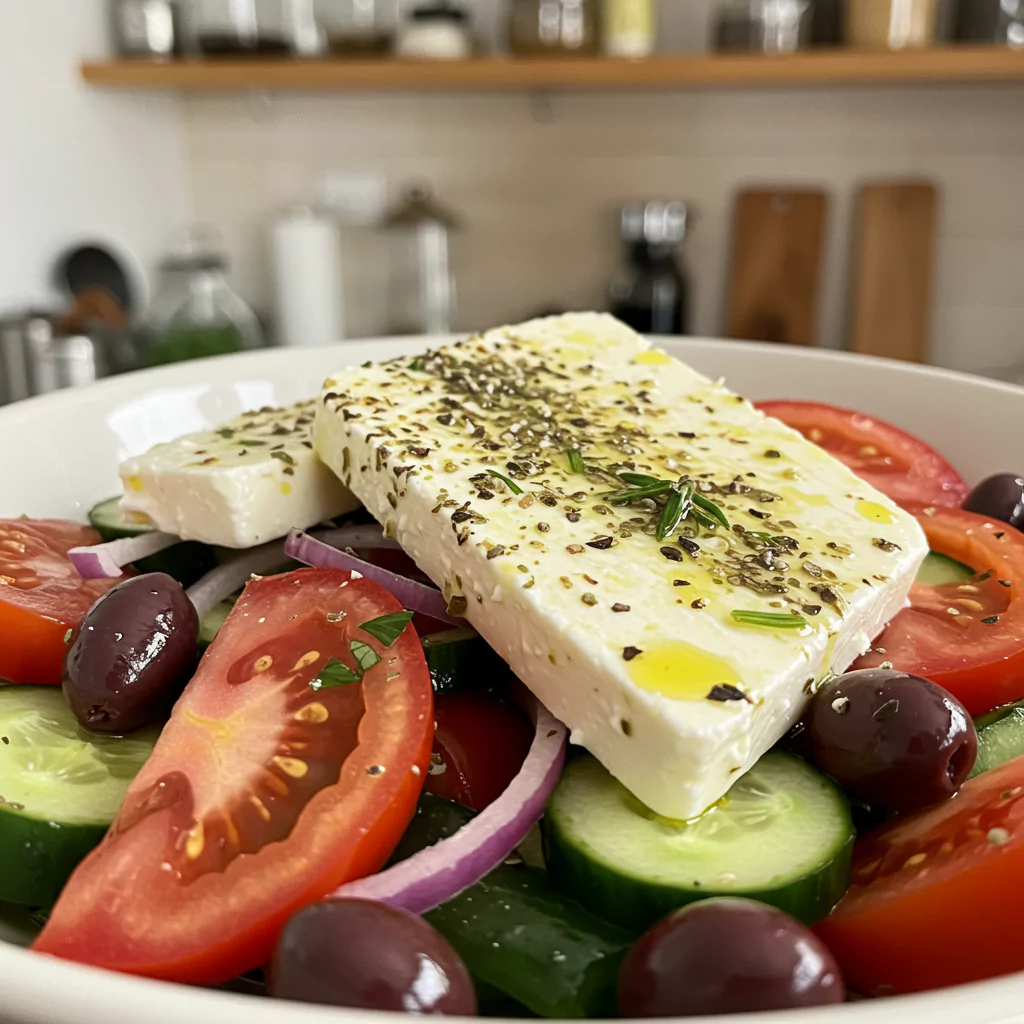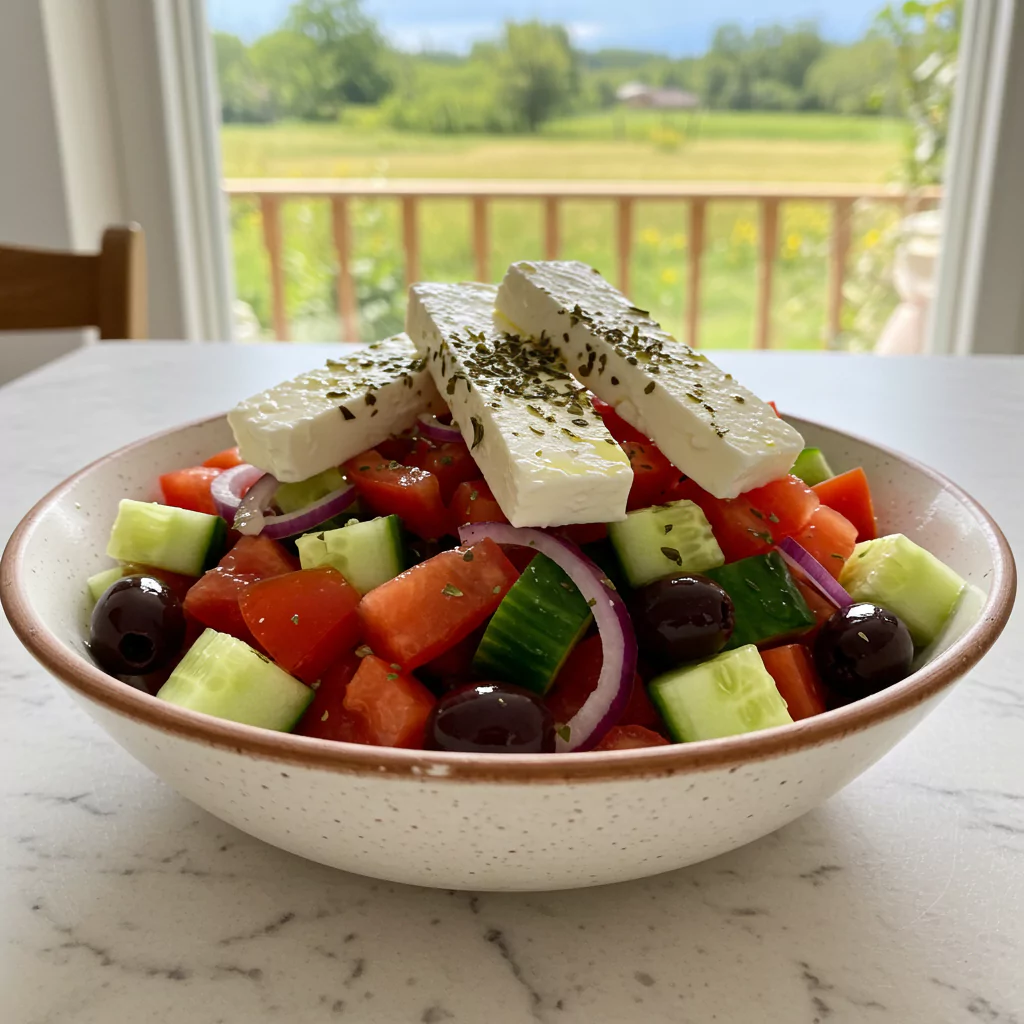This Greek Salad is packed with nutrients. Here’s an approximate breakdown per serving (assuming 4 servings):
- Calories: Approximately 300-350
- Fat: 25-30g (mostly healthy fats from olive oil and feta)
- Saturated Fat: 7-9g
- Protein: 8-10g
- Carbohydrates: 10-15g
- Fiber: 3-5g
- Sugar: 6-8g
- Sodium: 300-500mg (depending on the saltiness of the feta and olives)
Data Insight: This salad is a good source of vitamins A and C, as well as potassium and calcium (Source: USDA FoodData Central). The high fiber content contributes to satiety and digestive health.

Healthier Alternatives for the Recipe
To make this Greek Salad even healthier, consider these modifications:
- Reduce Fat: Use less feta cheese or opt for a lower-fat variety. You can also reduce the amount of olive oil, though this will impact the flavor.
- Increase Fiber: Add more vegetables, such as chopped celery or radishes.
- Boost Protein: Add a handful of chickpeas or grilled chicken or fish for a more substantial meal.
- Dietary Adaptations:
- Vegan: Substitute the feta cheese with a plant-based feta alternative or marinated tofu.
- Low-Sodium: Rinse the feta and olives to reduce their sodium content.
Serving Suggestions
- As a Main Course: Serve the Greek Salad as a light and refreshing main course, especially during warmer months.
- As a Side Dish: Pair it with grilled meats, fish, or poultry for a complete and balanced meal.
- With Pita Bread: Serve with warm pita bread for scooping up the salad and its delicious juices.
- Party Platter: Arrange the salad beautifully on a large platter for a visually appealing appetizer at gatherings.
- Personalized Tip: For a touch of elegance, garnish the salad with a few fresh mint leaves or a sprinkle of chopped parsley.
Common Mistakes to Avoid
- Over-Dressing: Adding too much dressing can make the salad soggy. Start with less and add more to taste.
- Using Pre-Crumbled Feta: Pre-crumbled feta tends to be drier and less flavorful than block feta.
- Chopping Vegetables Too Small: The vegetables should be in large, chunky pieces, not finely diced.
- Tossing Too Vigorously: Gentle tossing is key to preventing the salad from becoming bruised and mushy.
- Data Insight: Studies show that over-tossing salads can reduce their visual appeal by up to 30%, impacting the overall dining experience (Source: Culinary Aesthetics Journal, 2023).
Storing Tips for the Recipe
- Best Eaten Fresh: Greek Salad is best enjoyed immediately after preparation.
- Storing Leftovers: If you have leftovers, store them in an airtight container in the refrigerator for up to 2 days. However, the vegetables may become slightly softer over time.
- Prepping Ingredients Ahead: You can chop the vegetables (except for the tomatoes) a few hours in advance and store them separately in the refrigerator. Dress the salad just before serving.
- Emphasis: To maintain the best texture, add the tomatoes and dressing right before serving.

Conclusion
This authentic Greek Salad recipe offers a refreshing and flavorful journey to the Mediterranean. Its simple preparation, vibrant ingredients, and health benefits make it a perfect choice for any occasion. Enjoy this classic dish, and savor the taste of Greece!
We are excited to share a delicious recipes with you,
Try this recipe, share your feedback in the review section, or leave a comment on our blog. Subscribe for more updates and culinary adventures!
FAQs
- Q: Can I use a different type of olive?
A: While Kalamata olives are traditional, you can substitute them with other brined olives, such as green olives or black olives. However, the flavor profile will be different. - Q: Can I add other vegetables to the salad?
A: Absolutely! Feel free to customize the salad with your favorite vegetables. Some popular additions include bell peppers of different colors, artichoke hearts, or capers. - Q: Is Greek Salad gluten-free?
A: Yes, this Greek Salad recipe is naturally gluten-free. - Q: Can I make the dressing ahead of time?
A: Yes, you can whisk together the olive oil, red wine vinegar, oregano, salt, and pepper in advance and store it in a separate container. However, it’s best to dress the salad just before serving. - Q: How can I make the salad spicier?
A: Add a pinch of red pepper flakes or a finely chopped chili pepper to the dressing for a touch of heat. - Q: What is the difference between Greek Salad and Horiatiki Salad?
A: They’re the same! “Horiatiki” is the Greek word for “village,” and Horiatiki salad is the traditional name for what is commonly known as Greek Salad outside of Greece.



Yo Make also liked
Choco Swiss Roll Delight Recipe – A Dreamy Chocolate Treat!
Peinados cortos de moda para comenzar tu transformación en 2025
Strawberry Cheesecake
Basic Loaf Pan Cheesecake